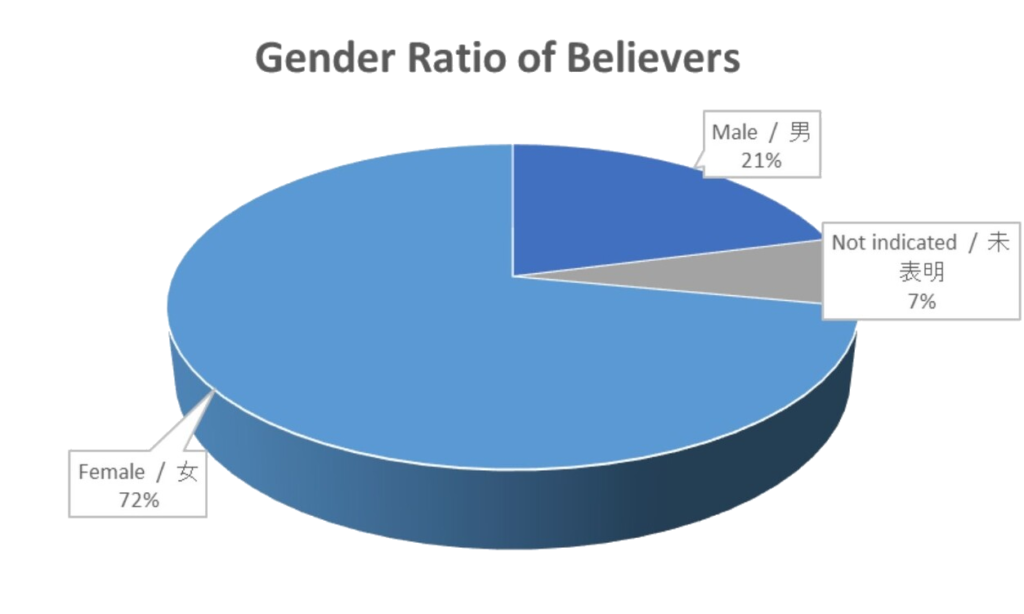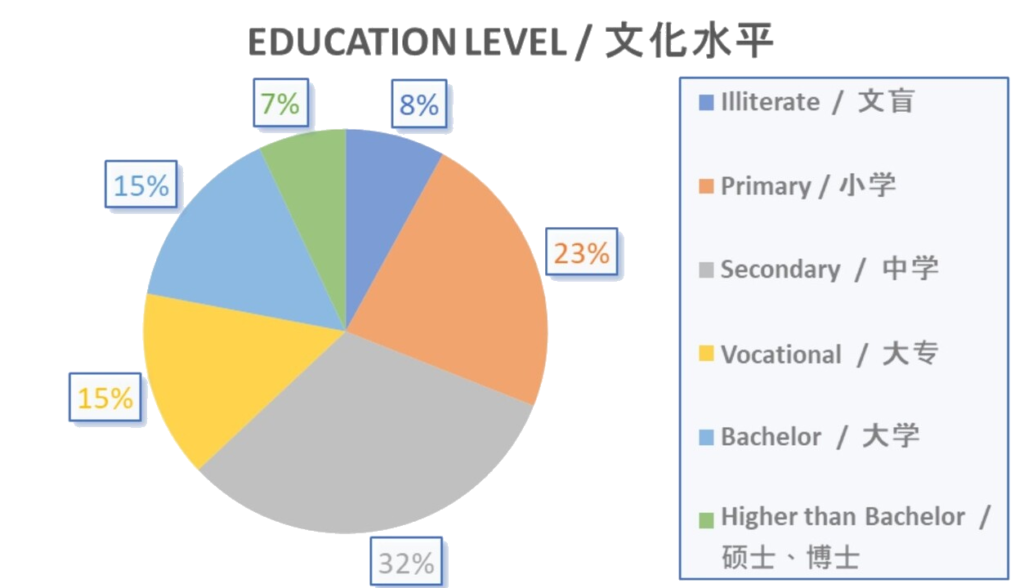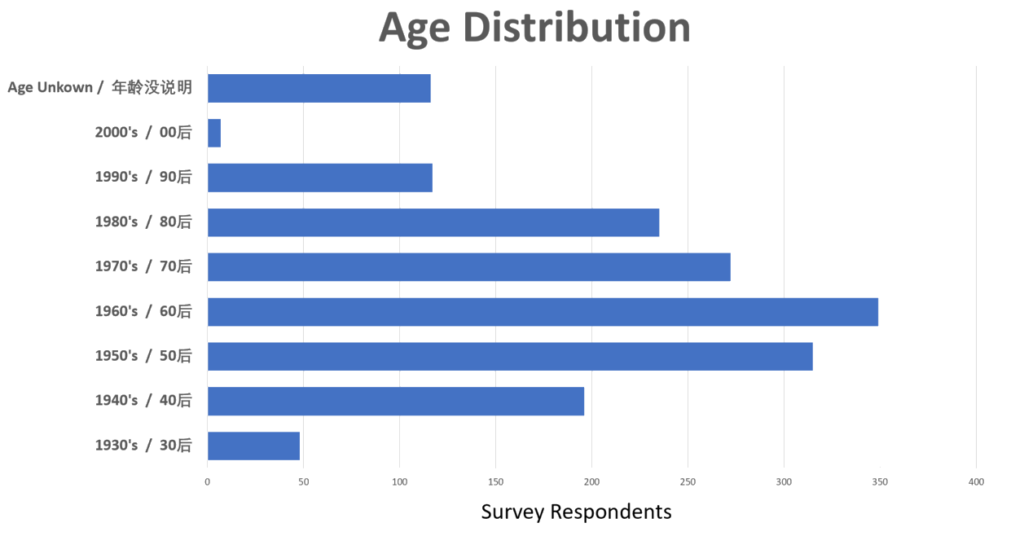As for any survey it is always important to understand, document, and cross-correlate the demographics of the survey group. The population descriptors can provide additional avenues for insight and analysis to help understand the survey responses. This first set of demographics helps us see who is in the churches we visited and who is responding to the survey.
Looking at those who responded, we see a majority of women responding:

The chart shows that at least 72% of adult Christians who have the ability to complete the survey are women. This is basically consistent with the results of the government-led “household” survey in 2008. The “majority women” among the “four majorities” or “three majorities” basically is confirmed. This shows that the feminization rate of the Chinese Christian community is relatively high.
Another important indicator in Chinese social science research is education level. This chart shows the education level of believers (including the church leaders):

The chart shows that the education level of Chinese believers has changed substantially over the recent 40 years, and this change is consistent with the change in urbanization and overall improvement in education in Chinese society. Among the respondents, only 31% of believers are illiterate or only have a primary education. This is much lower than the value of 54.6% in the Blue Book of Religion. This shows that those in the church who do not have the ability to read the Bible independently no longer occupy the mainstream of the Chinese believer group. In the long run, this change is irreversible and will only further decrease in the future.
At the same time, 22% of believers have a bachelor’s degree or above. Since Chinese higher education requires students to have a certain foreign language ability, this data shows that the majority of Christians in China not only have the ability to read the Bible, but also the number of those who can independently think about the Bible and theological issues has also increased greatly.
This not only indicates an increase in the degree of rational thought of the Chinese Christian community but also brings new challenges to pastoral care, apologetics, church planting, children’s education, and so on. At the same time, this creates many new opportunities, such as cross-cultural missions and local community participation. Compared with the local churches in China before 1949, the Chinese churches in the 21st century already have many services that previously relied on Western missionaries to provide, such as theological introspection, Bible translation, organizing NGO work, etc.
A third demographic indicator is age. When we look at the age distribution of the church respondents, we find the following:

The chart shows that among the current Christian community in China, the largest group was born in the 1960s and are now around 50 years old. The most common feature of this age group is that they were born in a period of great famine or the turbulent period of the Cultural Revolution. They were mainly educated in the 1970s. They experienced the impact of the rise of materialism beginning from the Cultural Revolution to Reform and Opening Up. Thus, their conversions bear important timestamps and they have profound personal insights. This means that at its core, the Christian community in China today is composed of a group of people with deep introspection, rich life experience, and strong will. They became the ballast of the Chinese Christian community.
Because the social volatility and impetuousness caused by more than 30 years of Reform and Opening Up and by increasing urbanization were very serious, this volatility and change inevitably affects the church. However, it is precisely because of the existence of this first group acting like ballast stones that the Chinese church could come through this volatile and impetuous period.
In addition, the figure also shows us that the Chinese church is generally composed of members from the 1950s to the 1980s. This is a spiritual group with a high degree of “ageing” (that is, more middle-aged people).
The proportion of women in Christian groups is high with many middle-aged. Due to China’s special political system, the employment rate of women is much higher than that of Western and industrialized countries (such as Japan, South Korea, etc.). Therefore, the proportion of “housewives” in the church is far lower than other countries. Due to the high proportion of couples in cross-industry and dual employment, families rarely use “home schooling” or private schools to educate their children. The demands of life cause the Chinese church to have a relatively high degree of social participation (such as a higher employment rate for women, a higher proportion of children receiving education in public schools, etc.). Therefore, Chinese Christians are engaged in a fragmented fashion with all classes of society. From the perspective of church shepherding, this situation does not seem favorable for the church to establish community, but from the perspective of evangelism and preaching, the Chinese church has strong social penetration.
In the next blog we will delve into the background of Christians prior to believing and the factors that impact Chinese people to convert to followers of Jesus.
Image credit: Wayne Ten Harmsel.
Steve Z.
Steve Z. (pseudonym) is a pastor, writer, researcher, and specialist on church development.View Full Bio
Are you enjoying a cup of good coffee or fragrant tea while reading the latest ChinaSource post? Consider donating the cost of that “cuppa” to support our content so we can continue to serve you with the latest on Christianity in China.